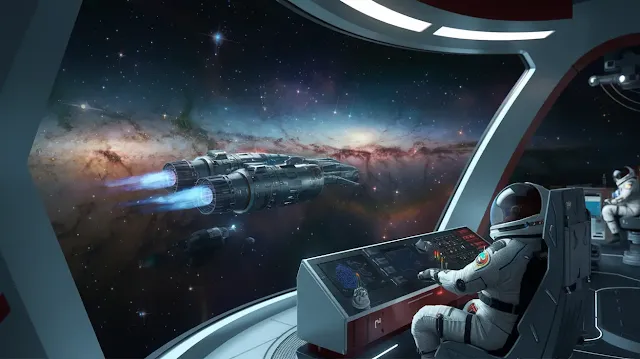Traveling Through the Stars: A Dream Poised to Become Reality
Interstellar travel, a concept that has long fueled human imagination, represents one of the most ambitious frontiers in space exploration. It combines cutting-edge science, philosophical depth, and technological innovation, raising fundamental questions about humanity’s future. Here, we explore the critical dimensions of interstellar travel, its challenges, and its transformative potential.
Technological and Engineering Feasibility
The Barriers to Near-Light Speed
Reaching other stars demands revolutionary propulsion technologies capable of achieving near-light speeds. Current chemical rockets are vastly inadequate, as they would take hundreds of thousands of years to reach the closest star, Proxima Centauri. Emerging concepts like laser propulsion, and solar sails are being researched to address this challenge.
Managing Energy Requirements
Interstellar spacecraft would require immense energy to overcome the constraints of relativistic dynamics. This demands breakthroughs in energy generation, storage, and utilization to ensure feasible and safe missions.
Philosophical and Ethical Dimensions
Human Identity Beyond Earth
Interstellar travel compels humanity to rethink its identity, purpose, and relationships. How will a multi-generational journey affect our culture, values, and connection to Earth?
Encounters with Extraterrestrial Life
What ethical frameworks should guide interactions with potential extraterrestrial life? Should humanity colonize new worlds, and what responsibilities would come with altering planetary ecosystems?
The Search for Extraterrestrial Life
Exploring Distant Solar Systems
Interstellar travel could open access to planets in other star systems, such as those in the habitable zones of exoplanets. This exploration could provide insights into whether life exists beyond Earth, and what forms it might take.
Expanding Scientific Horizons
Such missions would advance our understanding of astrophysics, planetary science, and the conditions necessary for life, unlocking new knowledge about the universe.
Environmental and Planetary Considerations
Sustainable Interstellar Exploration
As we pursue interstellar travel, we must consider its environmental implications. Designing sustainable spacecraft, and minimizing resource exploitation will be essential to preserve both Earth, and any other planetary systems we encounter.
Scientific and Educational Advancement
Catalyst for Innovation
The pursuit of interstellar travel would propel innovation in multiple fields, from physics and engineering to biology and artificial intelligence. These advancements could have far-reaching benefits beyond space exploration.
Inspiring Education and Research
This endeavor could inspire generations of scientists and engineers, fostering a global push for advancements in STEM education and research.
Challenges and Breakthroughs
Vast Distances Between Stars
The journey to the nearest star system highlights the need for extraordinary patience and innovation. Generational starships, and cryogenic technologies may be crucial for missions spanning centuries.
Sustaining Life on Long Voyages
Developing closed-loop life support systems, advanced recycling technologies, and solutions for biological and psychological well-being will be pivotal for long-duration missions.
A Vision for Humanity’s Future
Curiosity and the Drive to Explore
Interstellar travel embodies humanity's innate curiosity, and determination to transcend boundaries. It represents the next logical step in our quest to understand the universe and our place within it.
A Brighter Horizon
By investing in interstellar research, and overcoming the immense challenges, humanity can push beyond the confines of Earth, and the solar system. This journey will define a new chapter in our story, one of endless discovery and hope.
Conclusion
The dream of interstellar travel reflects humanity's unwavering curiosity and ambition. While technological, philosophical, and ethical challenges abound, they are not insurmountable. Through innovation, collaboration, and determination, the stars may one day become accessible, marking a transformative leap in human history.




Write a comment, your opinion matters to us